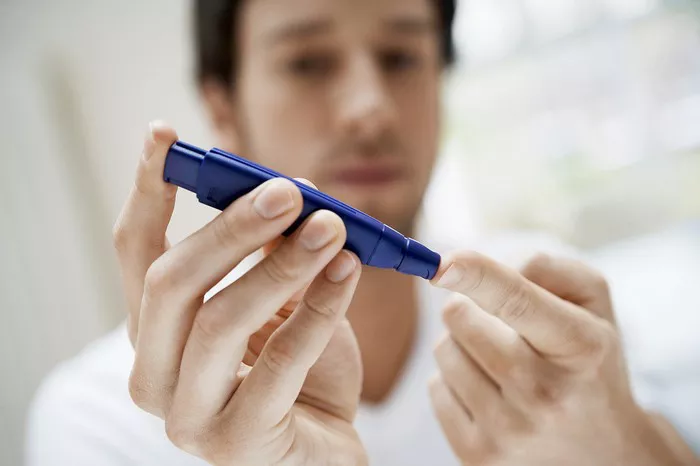Managing diabetes is not just about the foods you eat, but also about when you eat. The timing of your meals plays a crucial role in stabilizing blood sugar levels, preventing spikes, and minimizing the risk of complications. While the traditional advice of three square meals per day may be effective for some, others may benefit from more frequent meals or snacks to keep their glucose levels stable throughout the day. This article explores the optimal eating frequency for diabetics and provides evidence-based guidance on meal timing for better diabetes management.
Understanding Diabetes and the Role of Diet
Diabetes is a chronic condition characterized by elevated blood glucose levels. There are two main types of diabetes: Type 1 and Type 2, both of which are influenced by diet. In Type 1 diabetes, the body fails to produce insulin, a hormone necessary for transporting glucose from the bloodstream into cells. In Type 2 diabetes, the body either becomes resistant to insulin or does not produce enough of it.
Diet plays a critical role in both managing blood glucose levels and preventing complications associated with diabetes, such as cardiovascular disease, nerve damage, and kidney problems. Proper meal timing, portion control, and food choices are essential strategies in maintaining a healthy blood sugar level and improving the quality of life for diabetics.
The Science Behind Meal Timing for Diabetics
Research has shown that meal timing can significantly influence the body’s ability to regulate blood sugar levels. When diabetics eat irregularly or have long gaps between meals, it can lead to fluctuations in glucose levels, which may result in dangerous spikes or dips. The body’s response to food is not solely determined by the quantity or quality of food consumed, but also by how frequently it receives nutrients throughout the day.
For individuals with diabetes, insulin production and glucose utilization are less predictable. Therefore, eating at regular intervals and choosing the right types of food can help maintain steady blood glucose levels. The goal of meal timing is to prevent both hyperglycemia (high blood sugar) and hypoglycemia (low blood sugar), two major concerns for people living with diabetes.
How Often Should Diabetics Eat?
The optimal number of meals and snacks a diabetic should have depends on various factors such as age, activity level, medications, and overall health status. There is no one-size-fits-all approach, but research and clinical guidelines suggest that frequent, balanced meals throughout the day may offer significant benefits in blood glucose control.
1. Traditional Three Meals a Day:
For many years, the standard advice for diabetics was to eat three balanced meals a day—breakfast, lunch, and dinner—along with appropriate portion sizes. This approach works for individuals who have well-controlled diabetes, normal insulin sensitivity, or those using medications such as metformin or sulfonylureas that do not significantly alter insulin production throughout the day.
However, relying solely on three large meals may not be sufficient for everyone. The timing and composition of these meals are just as important as the frequency. For example, a large meal followed by several hours of fasting could lead to a significant spike in blood glucose levels, which is a concern for those with Type 2 diabetes.
2. Four to Six Smaller Meals a Day:
One strategy that has shown promise for individuals with Type 1 and Type 2 diabetes is dividing the daily food intake into four to six smaller meals. This approach helps prevent large fluctuations in blood sugar and provides the body with a steady source of energy. By eating smaller portions more frequently, diabetics can better manage their insulin production and avoid both spikes and dips in blood sugar.
The benefits of eating more frequently include:
Improved blood sugar control: Smaller, more frequent meals help regulate the release of insulin and prevent postprandial hyperglycemia (spikes in blood sugar after meals).
Better insulin sensitivity: Studies have shown that eating smaller meals more frequently can improve insulin sensitivity in Type 2 diabetics, leading to better long-term glucose control.
Prevention of overeating: Eating smaller meals throughout the day may reduce the risk of overeating during main meals, a common problem for diabetics who go too long between meals.
However, the content of each meal is critical. A small meal filled with high glycemic foods (like white bread or sugary snacks) will cause a rapid rise in blood sugar, negating the benefits of meal timing. Diabetics should aim for a balanced composition of carbohydrates, proteins, and healthy fats at every meal.
3. Grazing Throughout the Day:
For some diabetics, especially those with Type 1 diabetes or those on insulin therapy, the idea of “grazing”—eating small portions of food throughout the day—may be beneficial. Grazing can help prevent hypoglycemia, a common issue for individuals on insulin, who might experience drops in blood sugar levels between meals. By consuming small snacks or meals at regular intervals, these individuals can better maintain a stable glucose level.
However, grazing isn’t appropriate for everyone. Some people may find it difficult to stick to healthy snacks or may end up eating too frequently, which could lead to weight gain or complications such as hyperglycemia. Like with smaller meals, it’s essential to choose nutrient-dense, low glycemic index foods to maintain healthy blood sugar levels.
Key Considerations for Meal Timing and Frequency
1. Medications and Insulin Use:
The frequency and timing of meals should align with the medications being taken. For example, individuals who take insulin may need to plan their meals around their insulin injections. Fast-acting insulin, which is typically taken before meals, works best when a person eats shortly after administration. Likewise, those using long-acting insulin may need to coordinate their meal times to ensure steady blood glucose levels throughout the day.
2. Physical Activity Levels:
Exercise can significantly affect insulin sensitivity and blood sugar control. People who are physically active may benefit from eating more frequently to maintain stable blood sugar levels. Physical activity can lower blood glucose levels, so it’s important to balance meal timing with activity. A pre-workout snack can prevent a drop in blood sugar, while a post-workout meal can help replenish glycogen stores and keep glucose levels in check.
3. The Glycemic Index of Foods:
The glycemic index (GI) measures how quickly a food raises blood glucose levels. Diabetics should focus on low to moderate-GI foods such as whole grains, legumes, non-starchy vegetables, and fruits, which are digested more slowly and cause less fluctuation in blood sugar. High-GI foods such as white bread, sugary cereals, and processed snacks should be limited.
Meal timing becomes particularly important when consuming high-GI foods. If someone consumes a high-GI food, spacing meals or incorporating a protein or fat with the carb-rich meal can help slow the glucose absorption and prevent sudden spikes.
4. Intermittent Fasting:
Intermittent fasting (IF) has gained popularity as a potential strategy for managing Type 2 diabetes. Some studies have suggested that intermittent fasting, in which an individual eats within a limited window of time (such as 8 hours a day), can improve insulin sensitivity and help with weight loss. However, IF is not appropriate for everyone, especially for those using insulin or other medications that could increase the risk of hypoglycemia. Before trying IF, it is crucial to consult a healthcare provider to ensure it is safe.
Tips for Successful Meal Timing and Frequency
Eat Regularly: Avoid long gaps between meals to prevent blood sugar fluctuations. Aim to eat every 3 to 4 hours, depending on your individual needs and preferences.
Focus on Balanced Meals: Each meal should include a combination of complex carbohydrates, protein, and healthy fats. This balance helps slow digestion and prevents rapid increases in blood glucose.
Monitor Blood Sugar: Regular blood glucose monitoring will help you understand how different foods and meal timings affect your body. This data will allow you to make informed decisions about meal frequency and content.
Stay Hydrated: Drink plenty of water throughout the day, as dehydration can lead to higher blood sugar levels.
Consult Your Healthcare Provider: Work with your doctor, dietitian, or endocrinologist to create a personalized meal plan based on your lifestyle, health status, and medications.
Conclusion
The question of how often diabetics should eat is multifaceted, with no universal answer. Some individuals thrive on three meals a day, while others benefit from more frequent, smaller meals. The key is to find a meal timing strategy that works for your body, lifestyle, and treatment plan. By carefully considering meal frequency, food choices, and how they align with insulin production and activity levels, diabetics can optimize blood sugar control and reduce the risk of long-term complications. Always consult a healthcare professional before making any significant changes to your eating habits to ensure the best possible outcomes for your health.
Related topics:
What Should a Diabetic Eat to Lower Blood Sugar?


























